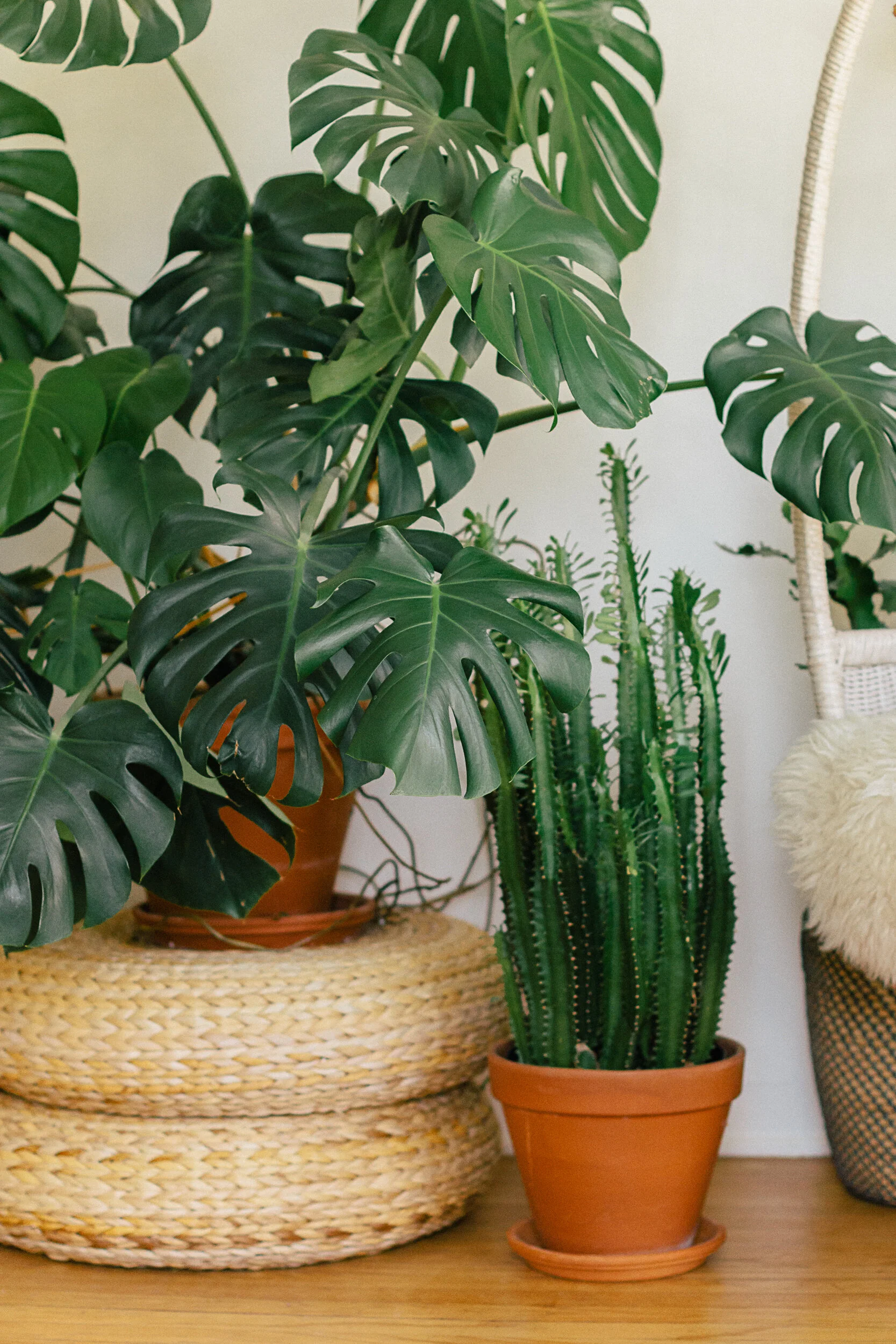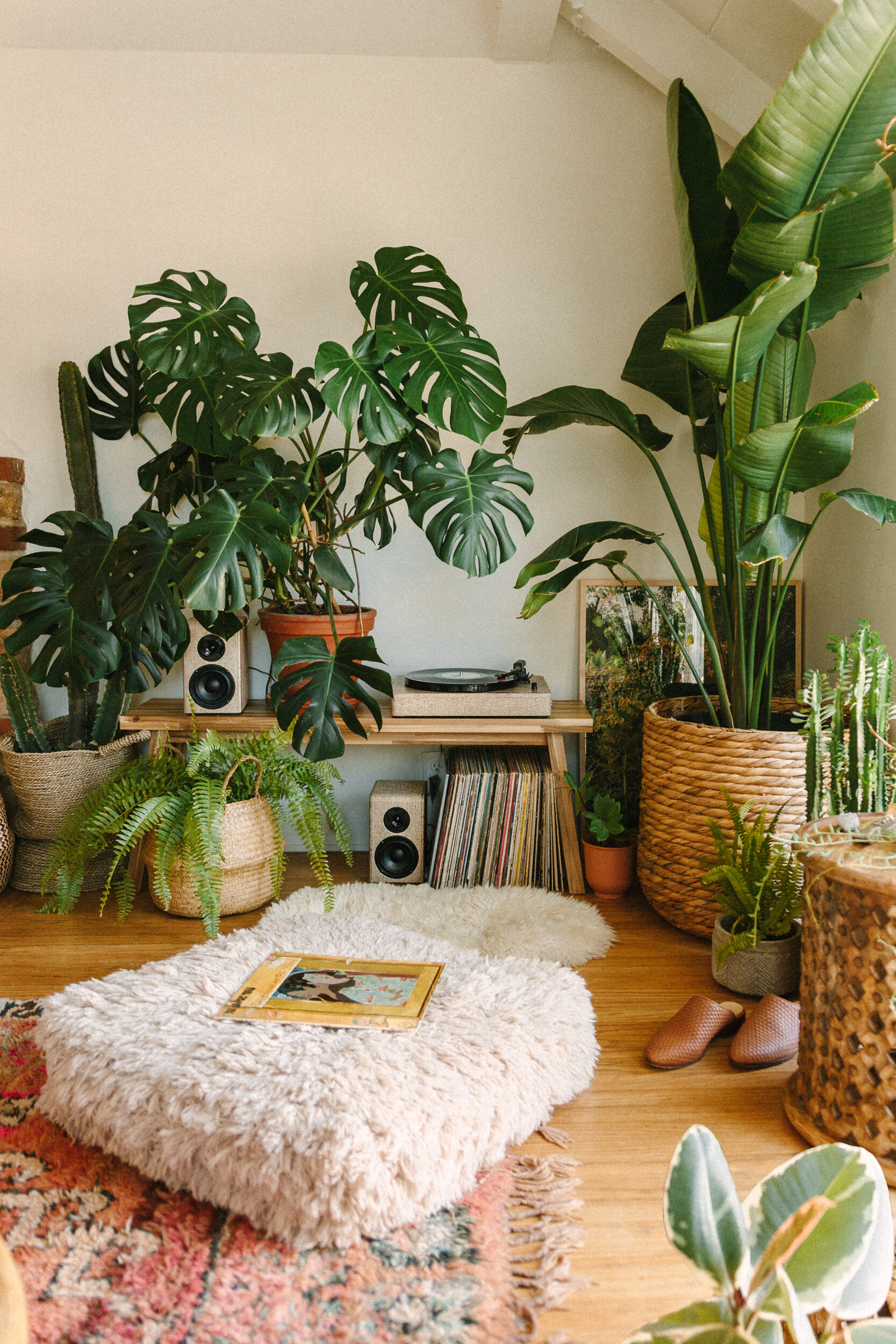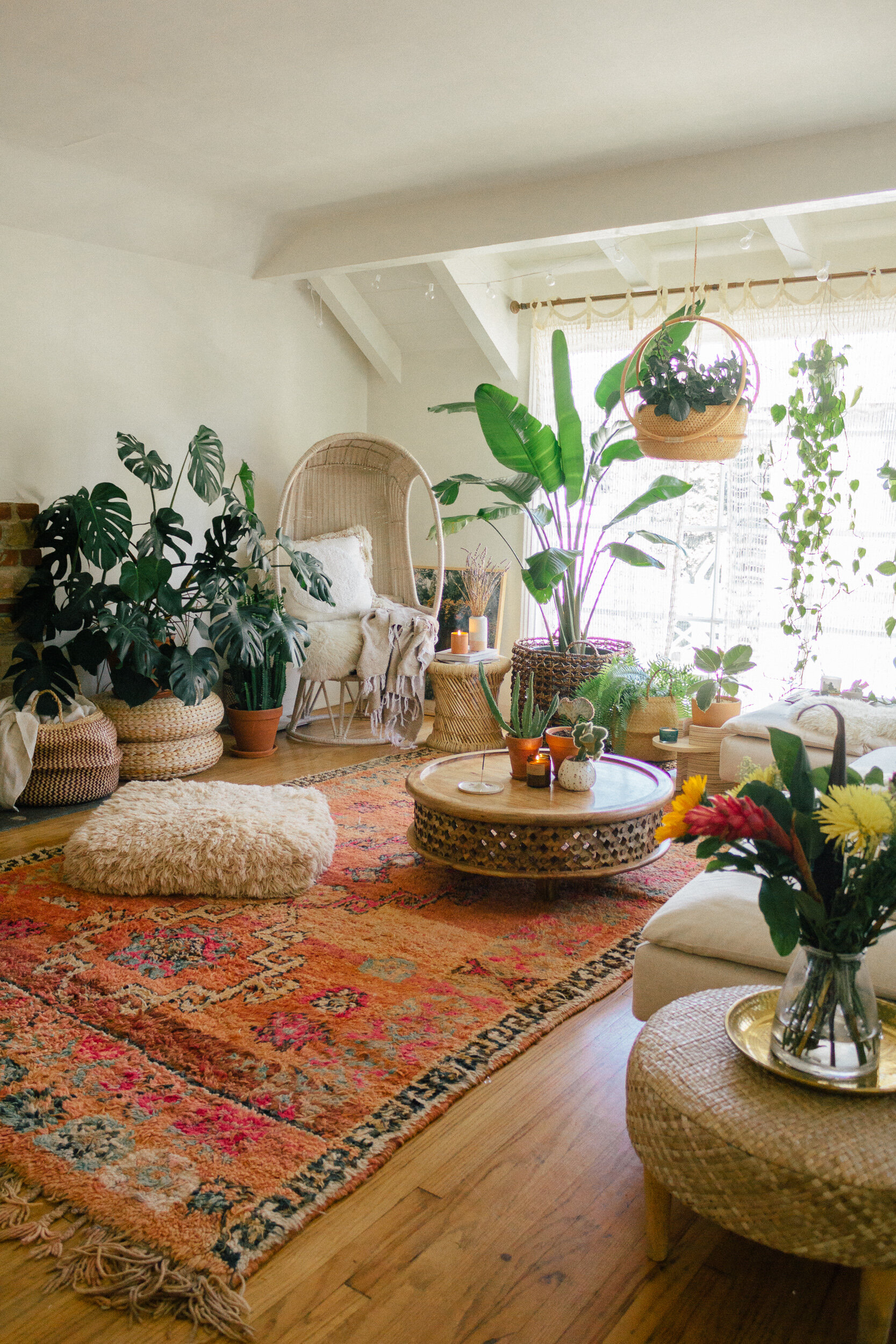Plant Care For Beginners
I’m not really a believer in the whole green thumb/black thumb theory, where some people are born with natural plant talent and others aren’t. I think we all have plain old thumbs, and anyone can take care of plants if they’re willing to put the work in! Just like anything else, it takes time and practice to get it right. The key to plant care in my mind, is this - if you truly care, there’s no way you won’t be good at it. If you’re reading this then you’re obviously someone who cares, and wants to learn more. So give yourself a pat on the back, and let’s get into the plant care basics!
Picking a Plant Pot
If your plant comes in a decorative pot, you’re good to go - no need to re-pot once you get home. But be forewarned, you usually pay quite a bit more when purchasing a plant that comes in a beautiful planter. Plants that are sold in their plastic nursery containers (also known as grower’s pots) are usually much more affordable. Plus, that means you get to pick your own planter! One of my personal faves are terracotta pots. I love the earthy, natural feel of terracotta, and orange + green is my fave color combo. Terracotta pots are also very affordable - depending where you look and the size you’re buying, you could snag a terracotta for just a few bucks. They’re especially great for cactus and succulents who prefer dryer soil, as terracotta naturally absorbs moisture out of the dirt. I love how terracotta just gets better with age, and starts to develop a really cool weathered look. The downside however is that they are fragile, and easily broken if knocked over.
Decorative ceramic pots are another gorgeous option! While they’re a bit more expensive than terracotta, you can find some truly precious handmade ones. Perf if you want a unique lil piece of art to house your plant bb.
Other pot materials include concrete, metal, wood, and woven materials. I would suggest steering clear of decorative plastic pots, as there are so many prettier/eco-friendly options out there!
A lot of times what I do is keep my plants in their nursery containers, and then place them inside a decorative planter. That saves me from having to immediately repot every plant I bring home, and allows me to swap out different planters whenever I like. I also like to place plants in woven baskets and rattan planters, so keeping them in their original container makes that simple and easy to do. The container isn’t meant to house the plant forever though, so once it starts to outgrow its grower’s pot, you will need to repot it for reals.
When buying a planter, make sure it’s the right size. If you want to keep it in the nursery container, make sure you’re buying a pot that is larger (but not TOO large) so that it fits inside nicely. Don’t forget to grab a water saucer! Saucers are a necessity if you want to be able to water your plants where they sit. Otherwise, you’ll have to carry all your plants to the sink or tub for a watering sesh. This is only if the pot you choose has a hole in the bottom for drainage. If it doesn’t, that means you’ll have to be extra careful to not over-water! You could also drill a hole in the bottom of a pot yourself, if you’re handy with tools ;)
Terracotta saucers are a great low cost option, but remember that they absorb water - if your plant will be sitting on a wood floor or shelf you’re afraid it might do damage to, you may want to go with a different saucer material. A lot of planters also come with built in saucers attached.
Lighting
Different types of plants require different types of lighting. Do your research and make sure your home can provide a plant the type of lighting it likes before buying it. Some plants, such as succulents and cactus, enjoy lots of sun. Others, such as pothos and philodendrons, will die if forced to sit in direct sunlight for long periods of time. Here are the lighting preferences for a few of my plants:
Monstera: Will tolerate low light but grows faster and healthier with bright to medium indirect light
Elephant Ear: Does best in bright, indirect light
Spider Plant: Adaptable, can survive in low to bright, indirect light
Ponytail Palm: Happy in bright indirect or direct light
Philodendron: Prefers indirect medium light, but will do okay in low lighting conditions
Pothos: Thrives in medium to low indirect light
Sansevieria: A great low maintenance plant, happy in low to bright light - but will do best in indirect sun.
Bird of Paradise: Light lovers, does best in bright indirect to bright light
ZZ Plant: Prefers medium to low indirect light
Pilea Peperomioides: Happiest in bright direct light, but can tolerate bright to medium indirect light.
Watering
Each plant is different, so you’ll want to do a bit of research on what the watering requirements are for your specific bb. A simple google search will tell you what you need to know! Pick a watering can that you love, so that you can display it proudly and have fun during your watering seshes. Make sure the size makes sense for you. If you’re only planning on keeping a couple plants in your home, a small can will work well. If you want to grow a lil jungle, invest in a larger can from the start so that you aren’t constantly refilling during watering seshes. I have two cans that live in my kitchen and bathroom. That way I have a can near both sinks if I notice a plant is thirsty in that particular room.
Personally, I don’t pick one day of the week to be “watering day”. If you water solely on what day of the week it is, you may end up over/under watering your plants. You definitely want to keep track of when you’re watering, but it doesn’t need to be a rigid schedule. For plants that I know like to be watered weekly, I’ll go around and stick my finger about 1 inch into the soil. If it feels dry, I know it’s time for a drink. A lot of times I can just tell it’s thirsty by how the leaves look. Curled up or yellowing leaves on my phothos and philodendrons are a cue to me that it’s time to water. Some plants, such as ferns, like their soil to always remain a bit moist. These plants will require more frequent waterings. Others, such as cactus and succulents, prefer to dry out completely before being watered again.
I fill my can up with room temperature water - hot or cold water can shock the plants, so aim for somewhere in the middle. Take your time watering! Tip the can over the soil and slowly work your way around in a circular motion making sure all the soil gets wet. Continue until water starts to seep from the bottom of the pot. Most of my plants have saucers underneath, so I’m able to water them right where they sit. For the ones that don’t have saucers, I’ll carry them to the sink and water them there.
Once all the water has drained into the saucer, I let the plant sit in it for around 15 minutes. This allows extra-thirsty plants to soak up anything extra it needs into the roots. If there’s water leftover in the saucer after 15 minutes, I empty it out. Do not let your plants sit in water for long periods of time, you want to avoid root rot at all costs!
Observe your plant over time, and see how it’s doing. If it starts to look sad, the problems usually start with watering or lighting. Make sure they’re getting enough of both, but not TOO much, and adjust if necessary. That may mean moving it to a different part of your house, or adjusting your watering frequency. Pay attention and do your research! A lot of times we buy plants simply because we like how they look, but if we don’t take the time to learn what the requirements are for that plant to be happy, we’re setting them up for eventual death. For example, if your home gets little to no natural light, filling it with succulents may not be your best bet. However, don’t beat yourself up for killing a plant! I’ve killed more than my fair share over the years. Does it hurt a bit when you lose one? Of course! But you can’t let it get you down, or dissuade you from trying again. Figure out where you went wrong, learn from it, and get yourself a new planty to cheer yourself up :) It’s really the only way to grow and become the best plant parent you can be.
I hope these tips help! Would love to know if you’d like a plant care series from me?! Future posts could include propagating, pruning, repotting, etc. Let me know in the comments if those types of posts would be of interest to you, or any other topics you’d like to see here!
If you’re looking for low-maintenance beginner plants, check out my Best Houseplants for New Parents. If you’re interested in where I buy my plants, check out The Best Plant Shops in Los Angeles. And if you want some plant styling tips, peep Creating A Plant Oasis At Home.
































